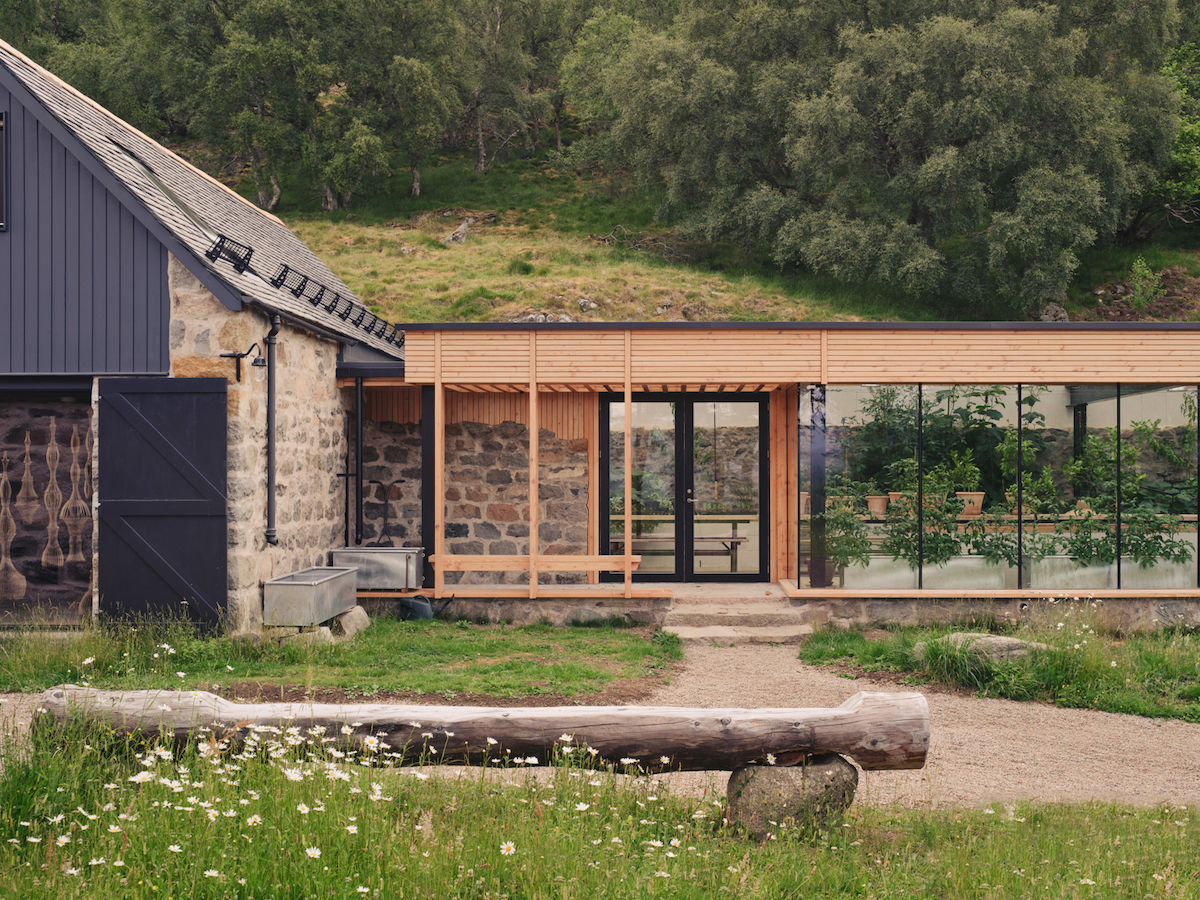Moxon Architects has transformed a historic Aberdeenshire farmstead into a carefully crafted guesthouse, glasshouse and artist’s studio.
Photos
Simon Kennedy
Moxon Architects has transformed a collection of 19th century agricultural buildings belonging to a hillside farm in the Cairngorms National Park, Aberdeenshire, into a modern guesthouse, glasshouse and artist’s studio. Employing a combination of traditional and contemporary construction methods, the repurposed structures are intended to complement the client’s restored farmhouse residence.
The largest building on the site has been repurposed to give additional study and living space to the farmhouse, while providing self-contained guesthouse accommodation for visiting friends and family. Beyond the main entrance and kitchen space, a living room and study occupy one double-height wing of the granite and slate building, while a ground-floor bathroom suite and upper-level loft bedroom complete the adjacent wing.
The architect has carefully rebuilt and restored the partially collapsed walls and roof of the cattle shed, inserting frameless glass within the original apertures to preserve the building’s vernacular detail and form. Using the pre-existing volumes as a template for the new living spaces, the interior has been fully insulated and lined with clay plaster, while oak joinery conceals modern appliances and fittings to preserve a minimalist rural aesthetic. The bathroom incorporates ceramic-clad walls and black-grey Caithness slabs.
A new roof emulates original construction techniques, introducing a newly rationalized pyramidal geometry at the hip, while the hayloft entrance and ventilation slits for the former cattle byre define the guesthouse entrance.
A formerly collapsed farm store and sheepfold at the rear of the site has been reinvented as a glasshouse. Partially embedded into the bedrock of the hillside by a retaining wall, the existing granite structure now serves as the backdrop to vines and lemon trees, and as a thermal store, soaking up heat from the new southwest-facing glass wall and roof that complete the enclosure. Steel portals support the roof, with large section Douglas fir fins defining a sheltered external space at one end and a secluded exercise room at the other.
The glasshouse is the result of collaboration between the artist/architect owners, joiners Jacek and Waldi Zapała, and steelwork fabricator Craig Monteith. Iteratively designed bespoke lighting is clamped to the glasshouse’s steel beams. Water for plant irrigation is collected from the roof and stored in an internal tank, which overflows to an external water butt carved from a windblown larch tree. Internal condensation is collected by a copper gutter and distributed into a bay tree planter. Ventilation is adjusted by large opening hatches located along the top back edge of the building, while supplemental heating is provided by a wood burning workshop stove.
At the northern end of the glasshouse, a two-storey farmstead has been repurposed as a private studio for artist and designer Naomi Mcintosh. Formerly used to winter sheep, the granite steading has been sensitively converted, to provide a compact workshop, kitchen, wet room, and storage, using robust materials to retain its agricultural character.
“It is testament to the robustness and resilience of the historic buildings that this is a project characterised by retention and repair,” said Ben Addy, founding director of Moxon Architects. “The new interventions are modest yet highly crafted, and seek to emulate the form and rigour of the 170-year-old architectural fabric that has largely retained its integrity. By spending time on site in all seasons, we developed the design and details to ensure that these once derelict buildings will survive for the next two hundred years to come.”
Additional Images
Source: Architecture Today







